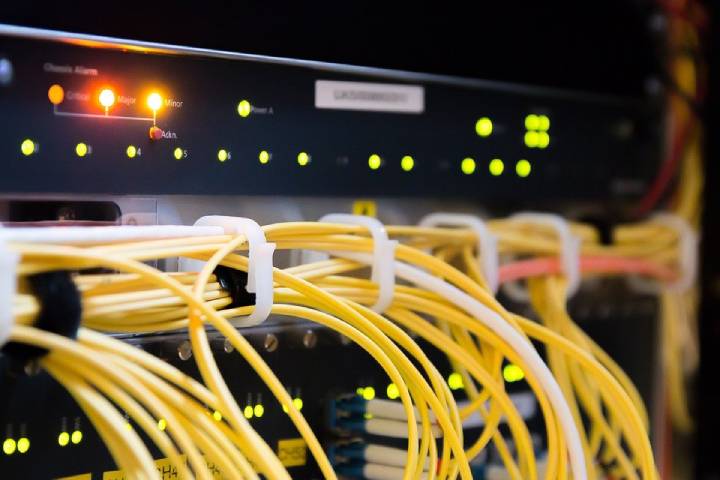Jitter? We’re sure you’ve heard the term before: If you’re feeling jittery, it could be because you’re about to bungee jump or be interviewed for a new job.
Perhaps your TV screen has the jitters when the image is jumpy or unstable, or it’s merely the word that best applies to any situation at all. The reasonable expectation of smoothness and synchronicity is out of whack.
1. What is network jitter?
When IP networks are suffering from the jitters, it’s no surprise that we call that network jitter. When you read an email or smoothly stream a video, packets of data have successfully flowed between a remote source and your system and device.
But when the latency varies because some packages are being held up or put out of sequence, the result is most noticeable in disruptions to the quality of real-time video and audio streams and online gaming.

2. Is there a network jitter test?
It’s important to realize that every network suffers from some degree of jitter because all those packets will always fly into a system with some level of delay.
For instance, a simple ‘ping’ test from the command prompt will show you precisely what sort of delays we are talking about. While minor delays will not be noticed, more significant ones – perhaps caused by route changes, network congestion, and interference – will cause problems.
3. What causes network jitter?
As we said, the only way network jitter doesn’t exist in any way whatsoever is if every packet arrives with the same delay, meaning that on that ping test, the suspension is less than one millisecond – and that’s very unlikely.
It’s only when those inconsistencies become significant – somewhere above 30ms on average – that you’ll notice any significant disruption.
When network jitter is proving a headache, it is probably caused by:
- Overcrowded and congested networks, typically caused by the overconsumption of bandwidth.
- Outdated or faulty hardware, including switches, routers, and cables.
- Poor connection, commonly caused by weak wireless networks.
4. Should you monitor your network jitter?
Therefore, jitter can often be rectified, or brought much closer to a jitter factor of zero, with upgrades or switching to wired connections.
The closer the average delay between packets is to zero is a crucial indicator of the performance of your network.
Hence, monitoring network jitter is a wise way to address these sorts of issues before they become more challenging to diagnose and solve.
While a ping test will give you a snapshot of your approximate jitter status, some powerful tools on the market will monitor, measure, display, and create reports about it in real-time.
Among the best are software packages like SolarWinds Network Quality Manager or Paessler PRTG, which are particularly useful for those heavily relying on VoIP calls.
They are notoriously affected by jitter. The tools monitor and calculate fluctuation in real-time and offer troubleshooting remedies – but licenses start at about $1000.
An excellent free tool is the MegaPath Speed Test Plus, which shows you jitter and latency as well as download and upload speeds.

5. The final word: Get on top of your jittery network
Just as there are no free lunches, there’s also no jitter-free networks.
But if you understand, diagnose, monitor, and troubleshoot a creeping network jitter problem before it gets away from you, it is a problem you can stay in command of.
Tech Trends
Related posts
Leave a Reply Cancel reply
Hot Topics
Categories
- Ads (5)
- Animes (25)
- Artificial Intelligence (AI) (35)
- Augmented Reality (AR) (10)
- Automotive (9)
- Bitcoin (16)
- Blockchain (23)
- Business (244)
- Business Intelligence (3)
- Cloud Computing (23)
- Computer (127)
- Concrete Technology (1)
- Cryptocurrency (10)
- Cybersecurity (39)
- Data Science (9)
- Database (4)
- DevOps (6)
- Digital Marketing (76)
- Digital Workplace (14)
- Ecommerce (1)
- Education (28)
- Electric Vehicle (EV) (1)
- Electronics & Hardware (16)
- Entertainment (42)
- Fabrication (3)
- FAQ's (1)
- Finance & Marketing (47)
- Gadgets (34)
- Games (8)
- Gear (29)
- HTTPS (1)
- Industry (46)
- Information Technology (88)
- Internet (413)
- Internet of Things (IoT) (40)
- Job (25)
- Machine Learning (5)
- Marketing (92)
- Mobile Apps (21)
- Movies (11)
- Natural Language Processing (5)
- News & Trends (108)
- Programming (4)
- Science & Technology (233)
- Security (78)
- SEO (56)
- Services (36)
- Social Media (73)
- Software (97)
- Sports (1)
- Technology (304)
- Telecom (6)
- TikTok (5)
- Tours & Travels (9)
- Uncategorized (11)
- Virtual Reality (VR) (7)
- VoIP (4)
- Web Technology (42)
- Workforce (17)
- Workspace (6)



Stay connected